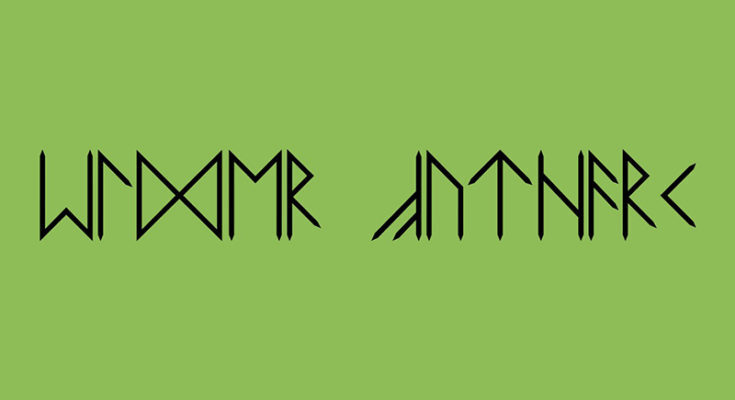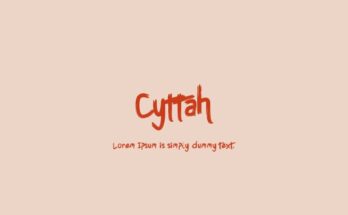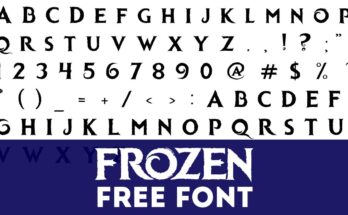The Elder Futhark is the oldest form of the runic alphabets. It was a system used by Germanic tribes for Northwestern Europe. It was used between the 2nd and 8th centuries, and, like the other alphabets, it contains signs both for phonemes and for the representation of entire words.
The Elder Futhark is divided into long-branch (Danish) and short-twig (Norwegian and Swedish) runes, also referred to as ættir or families.
The Elder Futhark alphabet is the oldest known runic alphabet. It was recorded in its purest form on a handful of bronze ornaments found in Germanic countries, dating from the 2nd to 8th centuries CE.
Check this font also: Frente H1 Font Free Download
The alphabet is divided into long-branch (Danish) and short-twig (Norwegian and Swedish) variants, while the latter was also used for inscriptions in the Anglo-Saxon rune poem. The Scandinavian variants have been supplanted by the Latin alphabet, but the Anglo-Saxon variant, which is the subject of this article, is still used today in Germanic countries.
Elder Futhark Font Family
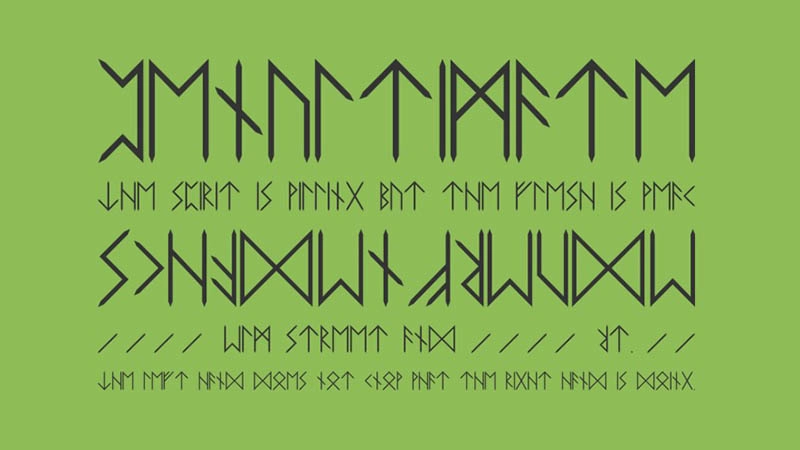
In this post, I will try to explain the font and how to use it. The font is called Elder Futhark, designed in 1972 by Robert E. Smith. This font is a member of the runic alphabet and designed to resemble the alphabets of the Norse and Germanic peoples. The font is more commonly called to be used in fantasy or ancient themed designs and can be a good addition to any font library.
The Elder Futhark are the oldest forms of the runic alphabets. The Elder Futhark gives you a very distinct and authentic feel to your designs. Its a bold font script with all the special characters included.
Also Download: Vivaldi Font Free Download
The Elder Futhark is the oldest form of the runic alphabets. It was a system used by Germanic tribes for divination and magical purposes. It was composed of 24 letters: 16 consonants and 8 vowels. The Germanic languages later added additional letters to the alphabet, resulting in what is now referred to as the Anglo-Saxon Futhorc.
The Elder Futhark is an alphabet that was used to write a variety of Germanic languages before the adoption of the Latin alphabet and for specialized purposes thereafter. It was developed in the 2nd and 3rd centuries from the 24-character Runic alphabet and was in use throughout Scandinavia during the Viking Age. The name “Elder Futhark” derives from the fact that it was in use for longer than the “Younger Futhark” which replaced it.
To celebrate the festive season, the team at FontsMag have put together a selection of 10 free fonts for all you font fiends out there. The fonts are all completely free for commercial use, so even if you’re working on a commercial project you can use these fonts without worrying about copyright infringement.
The Elder Futhark is a runic alphabet that was used for Germanic languages in the Migration Age. It was one of the first alphabets to have distinct letters for vowels as well as consonants.
The Elder Futhark consists of twenty-four runes that often are arranged in three groups of eight runes called an ætt (plural ættir). The earliest known complete inscription in the Elder Futhark was found on the Seeland-II-C-15-75-8-16 stone, also known as the Negau helmet, and dates to 150–175 AD.
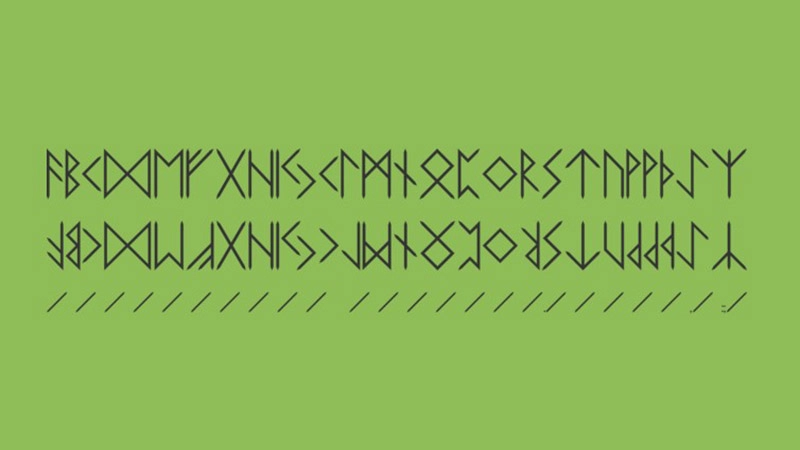
The Elder Futhark is the oldest form of the runic alphabet, used by the Germanic tribes for one thing or another before it was replaced by the letters of the Latin alphabet. This includes the Anglo-Frisian futhorc, the Scandinavian runes, and the medieval runes. Unfortunately, the Elder Futhark doesn’t have any letters that can be easily typed. If you want to type the runic alphabet, you need to use the Anglo-Frisian version, the Scandinavian version, or the medieval version.
And now you have your very own intro paragraphs, you can use them for your next blog post on the web. You can use these sentences in your pre-writing just as you would any other pre
The Elder Futhark or Scandinavian runes are an alphabet used for writing an unknown Germanic language, and Scandinavian runic inscriptions and texts date from the 2nd to the 8th century. It is divided into long-branch (Danish), short-twig (Norwegian), and the Anglo-Saxon Futhorc. The inscriptions and texts are known mostly from southern Scandinavia, and from the Germanic groups who emigrated from there.
The Elder Futhark is a runic alphabet that was used in parts of Northern Europe to write various Germanic languages before the adoption of the Latin alphabet and for specialised purposes thereafter. It is very closely related to the Anglo-Saxon Fuþorc. Its position in inscriptions appears to have been taken by the Gothic alphabet.
The Elder Futhark consists of twenty-four runes, often arranged in three groups of eight runes called an ætt. In the following table, each rune is given with its common (English) name (if it has one) and its Anglo-Saxon name (if it has one).
The Elder Futhark, or Scandinavian Runes, are among the oldest written symbols on the planet. They are believed to have been used between the 4th and 8th centuries AD. The Runes were used to write various Germanic languages like Old Norse and Anglo-Saxon, which belong to the Germanic language family. The Runes are named after the first six letters in the runic alphabet. Each letter was associated with an animal, a plant, or a natural phenomenon in Norse mythology.

